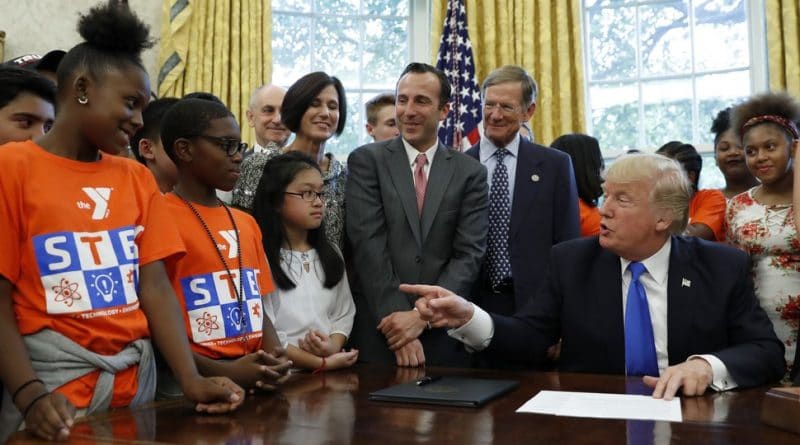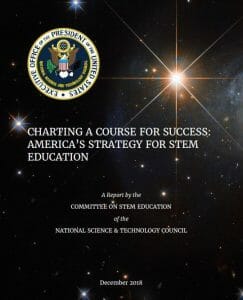CHARTING A COURSE FOR SUCCESS: AMERICA’S STRATEGY FOR STEM EDUCATION
source: https://thehill.com/opinion/education/
The report sets out a five-year STEM education strategic plan whereby “all Americans will have lifelong access to high-quality STEM education and the United States will be the global leader in STEM literacy, innovation and employment.”
It also identifies STEM Learning Ecosystems, currently made up of 65 communities across the nation, for “improving STEM literacy and supporting diversity, equity and inclusion in a thriving STEM workforce. … This pathway focuses on strengthening existing relationships and developing new connections between educational institutions, employers and their communities. That means bringing together schools, colleges and universities, libraries, museums and other community resources to build STEM ecosystems that broaden and enrich each learner’s educational and career journey.”
Echoing the 2013 OSTP strategic plan, the report wasn’t required by the current administration, but under the edict of the America CompetesReauthorization Act of 2010.
Despite this, a new game is afoot in Washington as a result of the midterm elections: how do we keep STEM education for all from being thwarted from the top down? Americans are demonstrating fresh determination to build it from the ground up with the record-breaking election of women and scientists at both federal and state levels this fall.
One of the bugaboos of relying on the STEM ecosystem model is that public education is treated as a sacrosanct state right, which hamstrings a national solution.
The report acknowledges that Americans’ basic STEM skills “continue to lag behind many other countries. According to the Indicators, “recent data from a test commonly taken by college-bound high school students found that only 20 percent are ready for courses typically required for a STEM major.”
No matter how dynamic the local STEM ecosystem proves to be, without a robust national STEM campaign that rapidly moves to fund and revitalize all public schools, the nation’s overall scores will not improve and the U.S. will be destined to fall behind economically.
Given this stark reality — even though the report attempts to reassure skittish elected officials that the steps set forth in its strategic plan is a “no cost” proposition — there will be costs to achieving universal STEM literacy. Building a STEM ready workforce requires the national will to infuse capital into STEM K-12 public school learning.
The Ecosystem movement alone cannot succeed as long as there are underfunded public schools, lack of teacher training and low salaries and limited STEM resources that place this country at greater risk than our crumbling roads and bridges do.
Without intervention by Congress to shore up public school infrastructures, certain ecosystems could wither; this is why the historic mid-term election of a record-number of scientists and progressive, education-minded women is so critical to long-term success envisioned in the report.
Congress can directly influence education through its spending authority— when states and local school boards accept federal funds, they must agree to comply with specific programmatic conditions. The 116th Congress can use the power of the purse to put both money and direction behind the report, thereby shoring up and invigorating the critical work of STEM Ecosystems.
Those of us who march for science have a new mission: we need to march ourselves and all of our STEM Ecosystem partners to Capitol Hill. We need to make the case to our individual state houses for public school funding that builds a national STEM education infrastructure and support for robust, child-centric STEM ecosystems across the land.
Spearheaded by NASA, NSF and Jeff Weld, the assistant director for STEM Education Office of Science and Technology Policy (OSTP), the committee received input from at least one representative from every state, the District of Columbia, Puerto Rico, and key U.S. and tribal territories. Two hundred and eleven business, community and STEM education leaders, including TIESand members of the STEM Funders Network, also provided insight.
BY PAULA GOLDEN, OPINION CONTRIBUTOR https://thehill.com/opinion/education/422354-all-50-states-plant-a-flag-for-universal-stem-education


